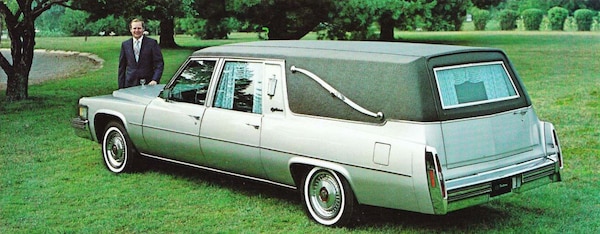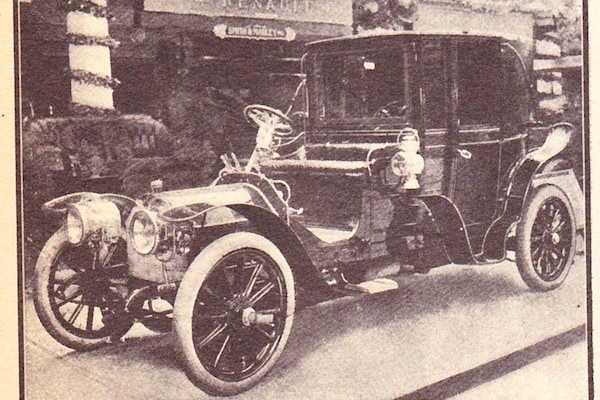
It will come as no surprise that the car is the natural successor of the carriage. After all, the very first automobiles in the 1880s were nothing more than combustion-engined carriages. But the horse-drawn carriage past is more deeply entrenched in the automotive industry than you might think. Even today, we still use terms that are a legacy of the time when our ancestors harnessed their horses and rode their carriages to market.
Why do we call the body of the car the body? Because this word comes from the karos; more about that later. But we also call it the bodywork. Remarkably enough, the structure of a carriage is again referred to as the ‘closet’. We owe the name ‘coach’ to the city of Koczy in Hungary. In the fifteenth century, wagons were built there that were explicitly intended to transport people. The first suspension makes its appearance, the body of the body hangs from the chassis with leather straps, so that the worst shocks caused by the bumpy roads are absorbed. The roof is made of cloths stretched over arches like a hood. From Hungary these cars travel into Europe and the name of their hometown is soon corrupted into the Dutch coach, the German Kutsche, the English coach and the Spanish coche.
Louise de Coligny
The history of chariots drawn by horses or oxen goes back much further, of course. As early as the Bronze Age, about 3,000 BC, wagons were used to transport goods. The Romans and the ancient Greeks also use this type of chariot. The idea that you can also build a car to transport people is relatively new. It is only in the thirteenth century that we come across these types of chariots and they are used exclusively by women. The ladies’ carriages are used, among other things, at the court of the French king.

In the Netherlands, people travel on foot, on horseback or by boat until the sixteenth century. In 1583, the Frenchwoman Louise de Coligny becomes the fourth wife of William of Orange. The carriage in which she comes to the Netherlands is probably the first to appear in our country. In the seventeenth century, carriages were given a fixed roof in the angular shape that we still know today. These cars are often luxuriously executed, with all kinds of upholstery. The Italians call such a luxuriously furnished coach a ‘carrozza’, we have adopted that word as karos. Later it is transformed into a car body. The development of the carriage continued when a closed carriage for four persons was built in Berlin around 1660. The Frenchman Philippe de Chieze designed this coach with two opposing benches for the Elector of Brandenburg. The case again hangs on leather straps, but they are now attached to curled metal springs. This model is known as the berline, a smaller variant is called the berlinet. Such a saloon was usually closed, only the doors had windows. If it had a windshield and side windows, it was called a glass sedan. The Gouden Koets is in fact also a kind of glass saloon.
The name berline is still used in French, but also in Flemish, to indicate a four-door car. In Italian, the name berlina is a common designation, which is often used by Alfa Romeo and Lancia, for example. We have come across the berlinetta for decades at Alfa Romeo and Ferrari, among others. In the 70s and 80s Opel uses the name Berlina as an indication for its most luxurious models.
From Landauer to Landautop
At the end of the eighteenth century, European roads improved. Long journeys are becoming easier and there is a demand for comfortable, faster carriages. On the basis of the saloon, a smaller coach for two people is being developed, with the front part of the cabinet being cut away, as it were, ‘coupé’ in French. This coupé is smaller, so faster and therefore better suited for long journeys. No wonder that the name coupé is soon also used in cars for a smaller, but faster variant of a saloon model.

An example of a land car, in this case on a hearse.
An open model, the Landau, is also being developed on the basis of the saloon. With that coach, the roof above the front and the rear can be folded down. In this way, the carriage is suitable for all types of weather. The name is taken from the German city of Landau, where this construction seems to have been used for the first time. The same construction is also used on the coupé, but because it is smaller, only the roof goes down at the rear. This small landau is therefore called landaulette. The last car to be produced with such a roof construction was the Maybach Landaulet in 2009. In the 1970s and 1980s, however, many American cars and a single Japanese were also fitted with the land car: a vinyl roof that only covered the rear part. of the roof, but that cannot be opened.
city car
In the nineteenth century, traffic in the major European cities became increasingly busy. It is discovered that a coupé is also useful in the city if Mr. or Mrs. – a carriage is still something for rich people – wants to do errands. This is how the name coupé de ville came into being. British statesman Lord Brougham thinks it can be done even better and has a coupé built that is luxuriously furnished and so light that it can be pulled by just one horse. Because in London the traffic is already so busy that you can’t get along well with a big carriage with two horses. The Brougham is luxurious, handy and manoeuvrable. It is mainly Cadillac that these two names have been used for a long time, but they have nothing to do with ‘small and agile’ anymore. A Cadillac Coupe de Ville (main photo) is a coupé, but certainly not a city car. And until recently, the name Brougham could be found on Cadillac’s most luxurious battleships.

Mercedes Brougham
Is the term Brougham so watered down? New. The old photo of a 1902 Mercedes Brougham provides the answer. This clearly shows that the body, or rather the box, of a Brougham coupe is placed on the chassis of an automobile. The owner of the vehicle sits there high and dry, while the driver, just like before, the coachman sits in front of the vehicle in all weathers. The coachman looked out over the horse, in this car the driver looks out over the hood under which in this case about 30 horsepower are hiding. The photo also immediately shows how the carriage and the car are related. They both have the same function, transporting people, and the first cars used many of the same techniques and materials as the carriages. In fact, the automobile as we know it today is simply a direct descendant of the fifteenth century carriage. Actually, a car is nothing but a carriage without horses.
This article originally appeared in AutoWeek Classics issue 7 of 2017.
– Thanks for information from Autoweek.nl